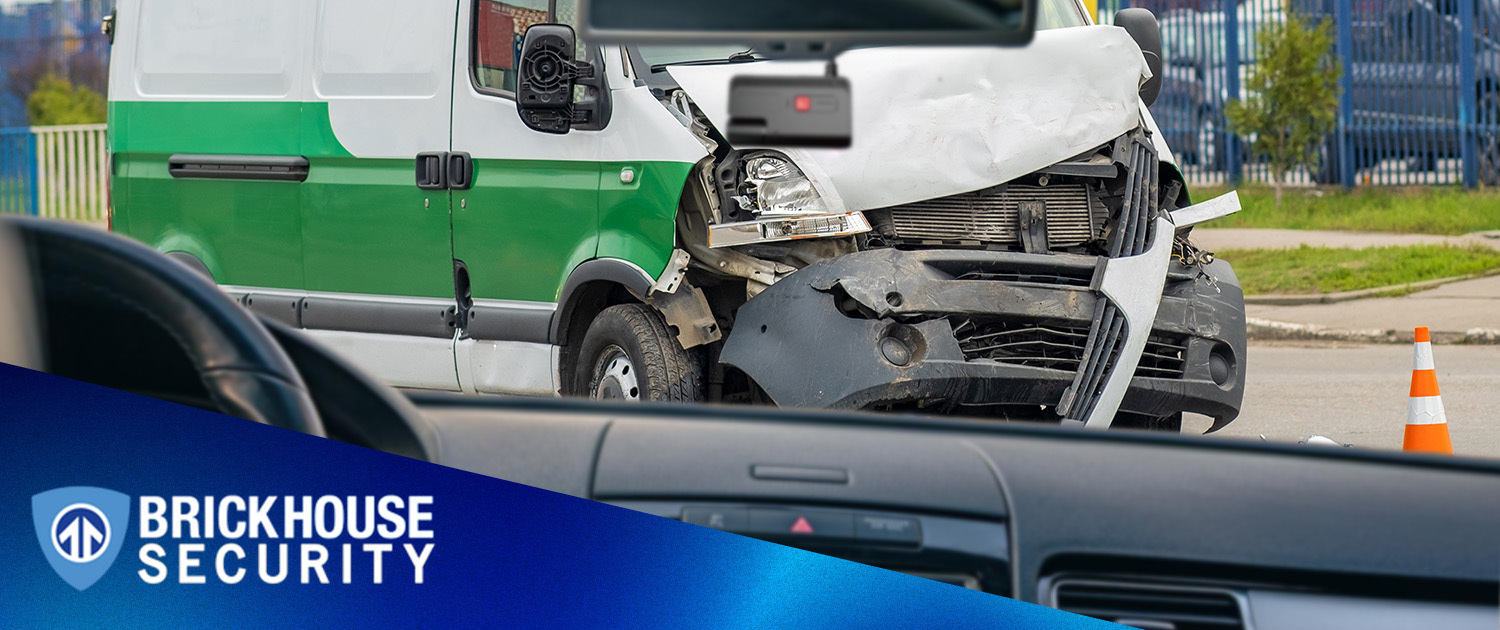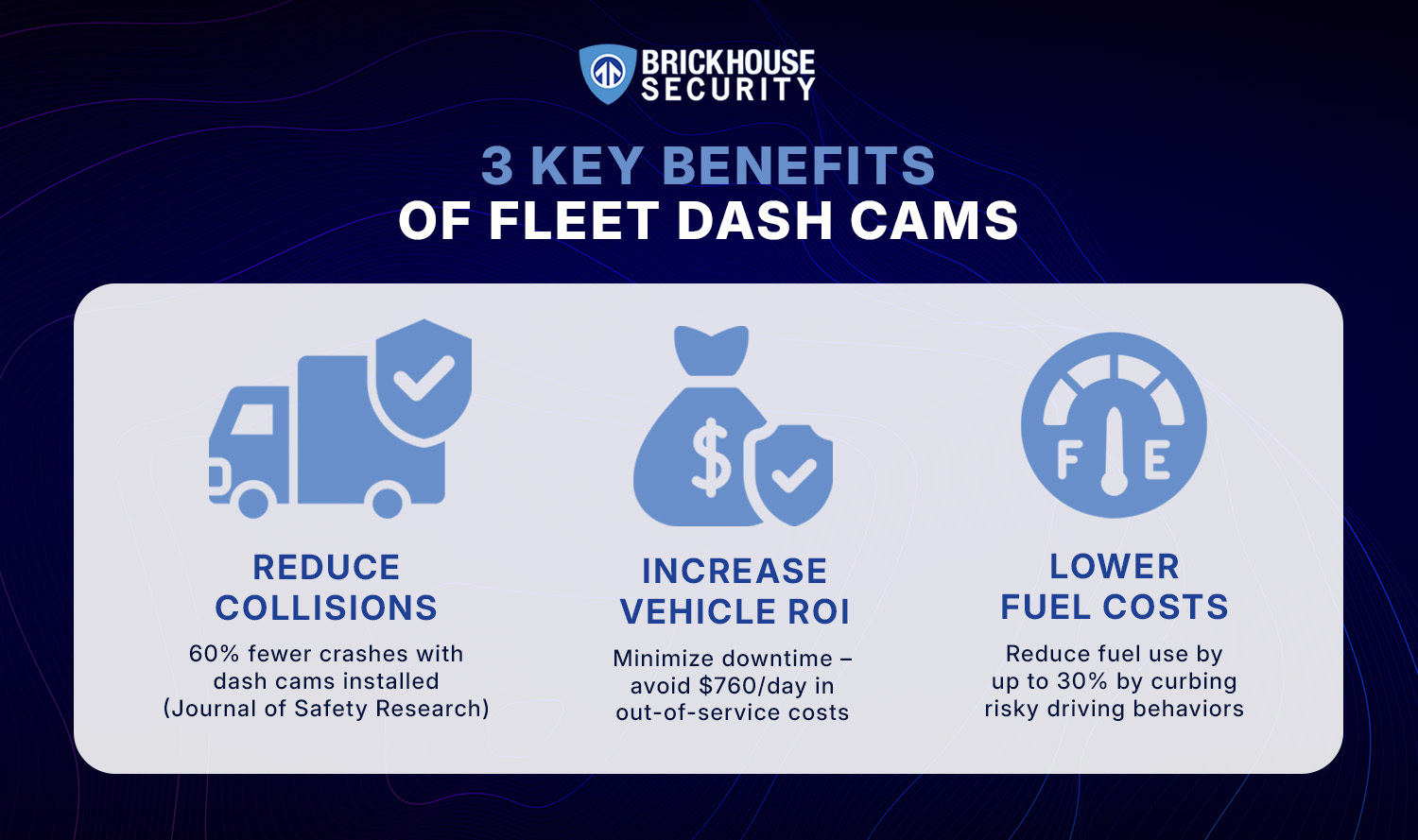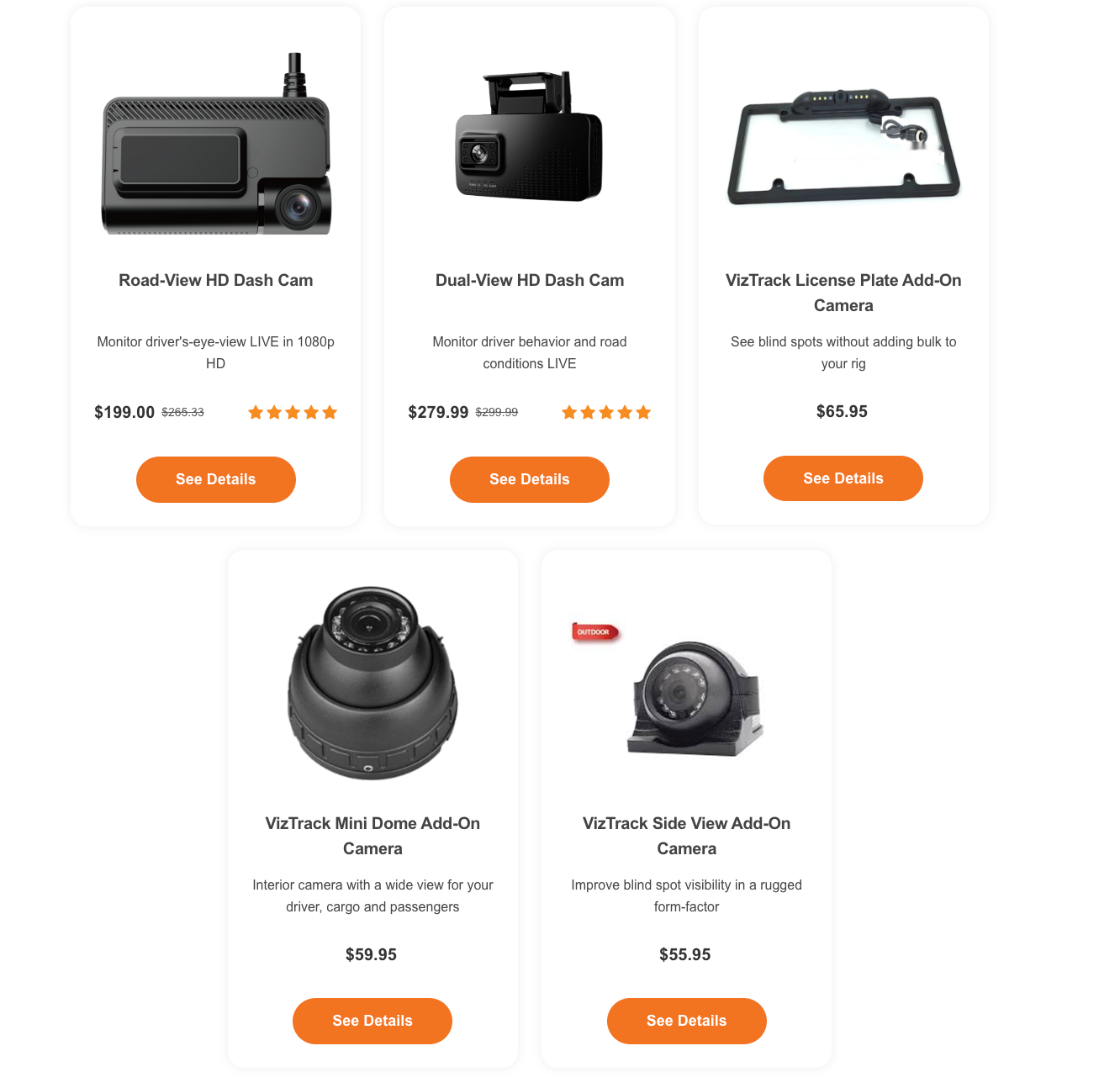The Ultimate Guide to Dash Cam Benefits for Fleet Vehicles in 2025

In today’s competitive, fast-paced logistics and transportation world, having visibility into what’s happening on the road is no longer optional—it’s essential. With increasing pressure on delivery timelines, rising operational costs, and heightened accountability, more and more fleet owners are turning to modern fleet dash cam systems to enhance safety, improve driver behavior, reduce costs, and protect their business from liability.
Whether you manage a few commercial vehicles or oversee an entire fleet, this guide will walk you through how dash cam technology and GPS tracking can be a game changer for your operations.
Dash Cam Technology in 2025: What’s New?
The dash cams of today are smarter, faster, and more connected than ever before. Unlike early models that simply recorded video to an SD card, modern fleet camera systems integrate cutting-edge artificial intelligence and machine vision to provide real-time insights and proactive safety alerts.
Innovations Driving Better Fleet Safety
- AI-Powered Monitoring: Advanced dash cams use machine vision to detect unsafe behaviors like cell phone use, distracted driving, tailgating, and even driver fatigue. These systems automatically send real-time alerts to both fleet managers and drivers, enabling immediate correction.
- Dual Cameras: The best dash cam systems now come equipped with dual cameras that monitor both the road ahead and the driver inside the vehicle. This ensures a complete picture in the event of an incident.
- Cloud-Based Dash Cam Solutions: Thanks to internet connected dash cams, fleet operators can now access detailed footage remotely, in real-time. Video uploads automatically to the cloud, reducing the risk of losing critical video evidence due to damage or theft.
- Seamless GPS Integration: Today’s dash cams don’t operate in a vacuum. They connect with GPS tracking technology, overlaying video footage with precise location and speed limit data to create a robust and trustworthy record of each trip.
These innovations are setting a new standard in fleet management. Dash cam use isn't just about accountability—it’s a proactive tool to improve fleet safety, optimize performance, and reduce costs.
Why Dash Cam Footage Is a Game-Changer in Fleet Safety

When an accident occurs, you need to know what really happened. Without hard evidence, your company is vulnerable to false claims, litigation, and skyrocketing insurance premiums. This is where dash cam footage becomes your best defense.
Real-World Example: Avoiding a $150K Lawsuit
Consider the real case of a Tennessee trucking company. One of their drivers was accused of causing a lane-change accident and was facing a lawsuit exceeding $150,000. However, their road-facing dash cam captured the truth: the other driver had illegally swerved into the lane.
The judge dismissed the case entirely, citing the video evidence as proof of the driver’s innocence. Without that footage, the company could have suffered devastating financial and reputational damage.
You can read the court’s summary judgment here.
Fleet-Wide Protection
Installing commercial vehicle cameras across your entire fleet provides peace of mind. It:
- Helps exonerate drivers in accidents
- Protects against fraudulent claims and staged crashes
- Ensures accountability and compliance with safe driving practices
- Supports internal safety programs with real data
In short, dashboard cameras put the truth on your side—every time.
How Fleet Dash Cam Systems Improve Driver Behavior

Your drivers are the face of your business on the road. Their habits directly affect your company’s bottom line, reputation, and safety record. By using fleet dash cams, you can both monitor driver behavior and encourage positive change.
How Dash Cams Encourage Better Driving
- Behavioral Feedback: Systems with driver facing cameras and audio alerts notify drivers in real-time about risky behavior—like distracted driving, harsh braking, or speeding.
- Driver Coaching Tools: Dash cam features paired with coaching software allow fleet managers to review incidents with drivers, offer feedback, and improve performance over time.
- Positive Reinforcement: It’s not just about catching mistakes. Many companies now use dash cam footage to highlight good driving habits and reward safe drivers, reinforcing a culture of excellence.
Measurable Improvements
Companies that implement fleet dash cam systems often report:
- 40-60% reduction in at-fault accidents
- 30% decrease in harsh braking and acceleration
- Significant improvement in overall driver satisfaction
Improving driver performance isn’t just about avoiding fines—it’s about building a team committed to improve safety and efficiency.
Lowering Insurance Premiums & Managing Claims
Insurance is a major cost center for fleet owners—but it doesn’t have to be. By leveraging dash cam technology, you can take control of your risk profile and reduce both insurance claims and premiums.
Why Insurers Prefer Fleets with Dash Cameras
- Proven Reduction in Risk: Insurers know that fleets using commercial dash cameras tend to experience fewer accidents.
- Faster Claims Resolution: Video footage accelerates claims handling by providing indisputable facts.
- Fraud Prevention: Protects against false claims and staged accidents—a growing issue in urban environments.
Premium Discounts
Many insurers now offer 5–15% discounts for fleets equipped with fleet dash cam solutions, especially when combined with GPS tracking and driver coaching programs.
Installing fleet camera systems is more than a safety decision—it’s a smart business move.
Fuel Savings and Vehicle ROI: The Hidden Dash Cam Benefits
While the safety benefits are clear, one of the lesser-known advantages of dash cams is their impact on cost savings. Fuel costs account for up to 60% of a fleet’s operating budget, according to First Citizens Bank. Dash cam solutions, especially when paired with telematics, can help drive those numbers down.
How Dash Cams Improve ROI
- Reduced Aggressive Driving: Harsh acceleration, sudden stops, and speeding increase fuel use. Dash cams work to curb these behaviors.
- Idle Time Monitoring: AI-powered dash cams combined with GPS tracking data can detect prolonged idling and notify drivers or dispatchers.
- Route Optimization: When integrated with GPS, managers can review route efficiency and minimize unnecessary mileage—reducing both vehicle wear and fuel consumption.
- Vehicle Uptime: Fewer accidents mean fewer repairs. That translates to more time on the road and a faster return on investment for your fleet vehicles.
Improved driving practices not only lower fuel costs—they extend vehicle lifespan and reduce downtime, improving the overall efficiency of your business operations.
Fleet Management with AI and GPS Tracking
Advanced dash cam systems don’t operate in isolation. They integrate seamlessly with your existing fleet management tools to give you a holistic view of your operations.
The Power of Connectivity
- Live GPS Tracking: Know exactly where your drivers are in real time, with insights into speed limit compliance and route efficiency.
- Safety Event Detection: AI analyzes driving behavior and flags high-risk events such as lane drifting, drowsiness, or distracted driving.
- Performance Dashboards: See driver scorecards, safety trends, and compliance metrics across your entire fleet.
- Instant Alerts: Get notified the moment a safety event happens. You can even set up automated responses, such as alerts when a driver goes off-route or exceeds a speed threshold.
The integration of GPS tracking technology and dash cam features ensures you're not just reactive—you're proactive.
Choosing the Best Dash Cam for Your Commercial Vehicles
Selecting the right fleet dash cam solution can feel overwhelming with so many options on the market. Here’s how to choose a dash cam system that aligns with your business needs.
What to Look For
- Dual Cameras: Essential for seeing both the road ahead and in-cab activity.
- HD Video Quality: Look for 1080p or 4K resolution to ensure video quality is never compromised.
- Cloud Connectivity: Automatic upload ensures video evidence is safe and accessible at all times.
- AI and Machine Vision: Real-time detection of risk behaviors enhances driver safety.
- Integrated GPS: Adds valuable gps data for reviewing routes, speeds, and incident locations.
- Driver Alerts: Systems that alert drivers in real-time help correct unsafe behaviors immediately.
- Scalability: Make sure your system can grow with your fleet vehicles.
Your commercial dash cameras should match the scope of your fleet, the complexity of your operations, and the expectations of your customers and insurance providers.
Conclusion: Safer Roads Start with Smarter Fleets
From improving driver safety and accountability to cutting costs and resolving insurance claims faster, the benefits of dash cameras for commercial fleets are undeniable. Whether you're managing passenger vehicles or heavy-duty trucks, modern fleet dash cam systems provide the tools you need to run safer, smarter operations.
If you're serious about improving fleet safety, protecting your team, and maximizing ROI, now is the time to explore dash cam solutions built for the future.
FAQ
How do fleet dash cams help reduce distracted driving?
Fleet dash cam systems equipped with AI and machine vision are designed to detect signs of distracted driving in real time. These cameras can identify behaviors like cell phone use, looking away from the road, or yawning, which could indicate driver fatigue. When detected, the system can issue immediate in-cab alerts to alert drivers, encouraging them to refocus. Over time, this proactive monitoring improves overall driver behavior, reducing crash risk and supporting a culture of safe driving practices.
Can dash cam footage actually lower insurance premiums for fleets?
Yes, many insurers now recognize the value of dash cam footage in managing risk and resolving insurance claims quickly. Fleets using commercial dash cams are often eligible for reduced premiums—sometimes up to 15%—because they demonstrate a commitment to fleet safety and risk reduction. In the event of a crash, detailed footage helps quickly exonerate drivers and prevent costly payouts on false claims, leading to better claims histories and lower long-term costs.
What's the difference between dual dash cams and single-lens models?
A dual dash cam records both the road ahead and the driver inside the cabin, providing a full picture of any event. This is especially important in commercial vehicles, where understanding both external conditions and in-cab behavior is critical for liability, training, and driver coaching. Single-lens models typically record only one view—often forward-facing—which may limit context in the event of a dispute. For full accountability and training value, a dual camera system is highly recommended.
How do dash cam systems improve daily operations for fleet managers?
Dash cam systems integrated with GPS tracking technology give fleet managers real-time visibility into their operations. They can monitor routes, track arrival and departure times, identify speed limit violations, and even detect excessive vehicle wear from aggressive driving. This visibility helps streamline business operations, optimize fuel usage, and reduce unnecessary downtime. Managers can also use footage captured to coach drivers and reward safe behavior, ultimately improving both efficiency and morale.
What are the legal considerations when using driver-facing cameras in commercial fleets?
Using driver-facing cameras can raise privacy concerns, so it's important to be transparent with drivers about how dashboard cameras are used. Most fleets incorporate camera policies into their onboarding and safety training, clarifying that cameras are intended to improve driver safety, reduce insurance claims, and improve fleet safety. In many regions, obtaining consent from employees is required—especially if audio recording is involved. However, the legal landscape can vary, so fleet owners should always consult with legal counsel to ensure compliance with local laws.
Can dash cams help detect and prevent driver fatigue?
Absolutely. Many modern dash cam features include AI that monitors for signs of driver fatigue—such as drooping eyelids, slow blink rates, or head-nodding. When fatigue is detected, the dash cam system can issue audible alerts to the driver and send real-time notifications to fleet managers. This feature plays a crucial role in preventing fatigue-related accidents and enhances overall driver safety.
Are dash cams effective for smaller fleets or delivery operations?
Yes—fleet dash cam solutions aren't just for large trucking companies. Small delivery operations and local service businesses can see major benefits, including improved driver performance, reduced insurance premiums, and increased accountability. Even a fleet of 3–5 commercial vehicles can benefit from video evidence in case of disputes, and real-time GPS data can enhance customer service by providing accurate ETAs and delivery confirmations.
How do internet connected dash cams differ from traditional models?
Unlike traditional dash cameras that store video on SD cards, internet connected dash cams upload video footage instantly to the cloud. This not only protects against data loss (in the event of a crash or theft) but also allows fleet managers to review incidents in real time, regardless of location. These systems can also deliver live alerts, integrate with gps tracking, and make remote coaching possible—transforming dash cameras from passive recorders into active safety tools.
Do dash cameras only help after an incident, or can they actually prevent accidents?
While video footage is essential for reviewing incidents, modern dash cam solutions are just as valuable in accident prevention. AI-equipped systems provide real-time feedback to drivers, helping them correct behaviors before they lead to a crash. By reducing habits like speeding, tailgating, or distracted driving, dash cameras directly contribute to improving driver safety—preventing accidents before they happen.
How long is footage stored, and can it be retrieved for insurance or legal needs?
Most fleet camera systems allow for flexible video footage storage based on cloud plans and event triggers. Critical safety events—such as hard braking, sudden lane changes, or collisions—are automatically bookmarked and stored longer than regular driving footage. With cloud-connected systems, you can easily retrieve specific footage with GPS tracking data and timestamps to support insurance claims, legal defenses, or internal reviews.
Take the Next Step with BrickHouse Security
At BrickHouse Security, we offer advanced fleet camera and GPS tracking solutions that combine crystal-clear HD video, cutting-edge AI, and scalable tools for any size fleet management operation.
✅ Designed for commercial vehicles
✅ Proven to reduce costs and improve driver performance
✅ Backed by 24/7 U.S.-based support
Call us today to speak with a fleet safety expert: 800-654-7966
Explore our fleet Dash Cams
Posted by Todd Morris on Apr 16th 2025


